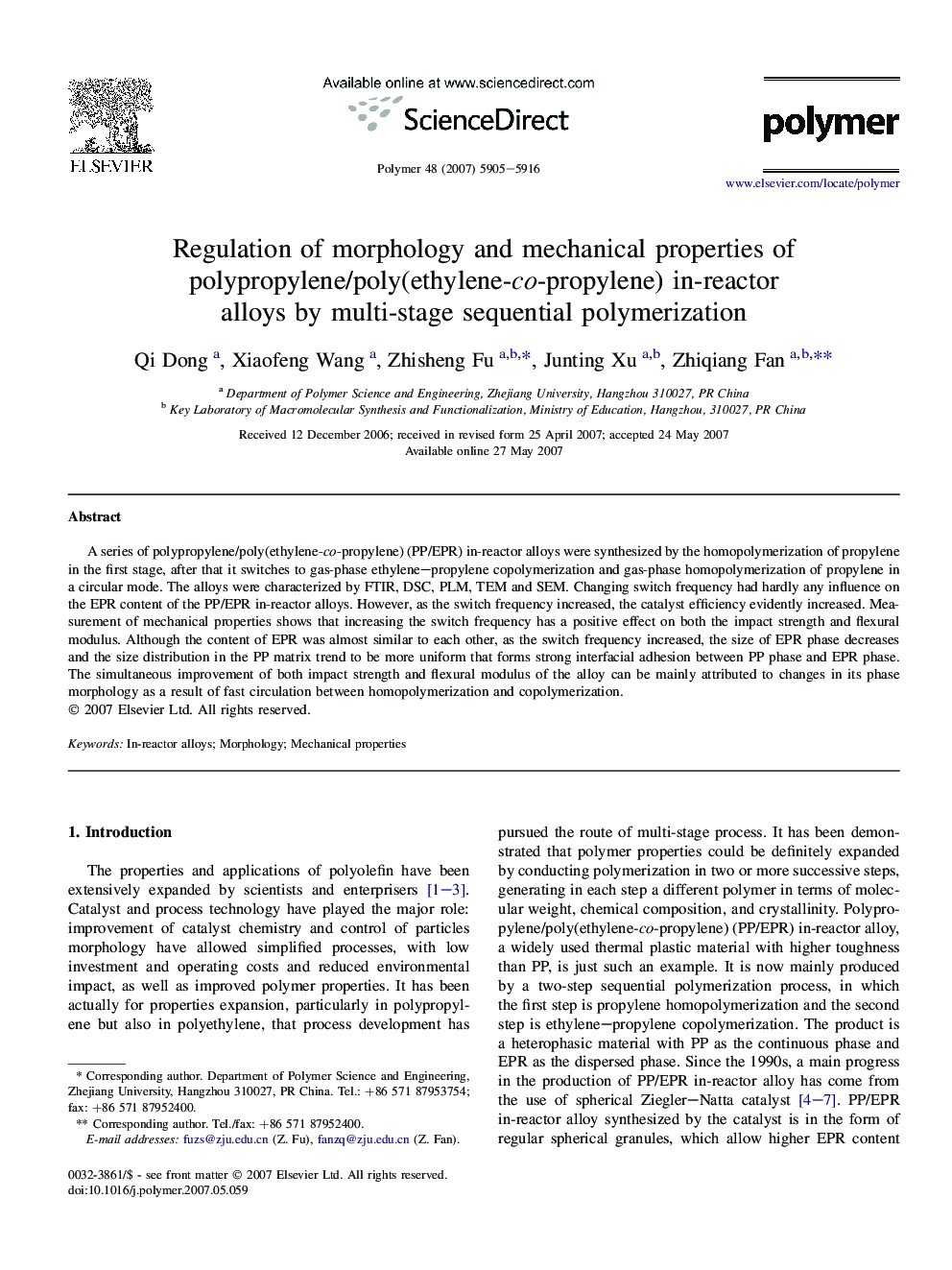| Article ID | Journal | Published Year | Pages | File Type |
|---|---|---|---|---|
| 5189448 | Polymer | 2007 | 12 Pages |
Abstract
A series of polypropylene/poly(ethylene-co-propylene) (PP/EPR) in-reactor alloys were synthesized by the homopolymerization of propylene in the first stage, after that it switches to gas-phase ethylene-propylene copolymerization and gas-phase homopolymerization of propylene in a circular mode. The alloys were characterized by FTIR, DSC, PLM, TEM and SEM. Changing switch frequency had hardly any influence on the EPR content of the PP/EPR in-reactor alloys. However, as the switch frequency increased, the catalyst efficiency evidently increased. Measurement of mechanical properties shows that increasing the switch frequency has a positive effect on both the impact strength and flexural modulus. Although the content of EPR was almost similar to each other, as the switch frequency increased, the size of EPR phase decreases and the size distribution in the PP matrix trend to be more uniform that forms strong interfacial adhesion between PP phase and EPR phase. The simultaneous improvement of both impact strength and flexural modulus of the alloy can be mainly attributed to changes in its phase morphology as a result of fast circulation between homopolymerization and copolymerization.
Keywords
Related Topics
Physical Sciences and Engineering
Chemistry
Organic Chemistry
Authors
Qi Dong, Xiaofeng Wang, Zhisheng Fu, Junting Xu, Zhiqiang Fan,
